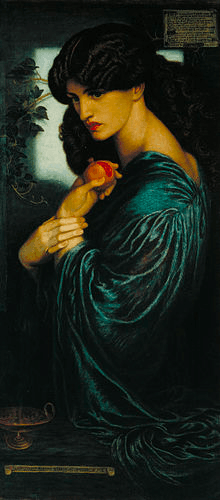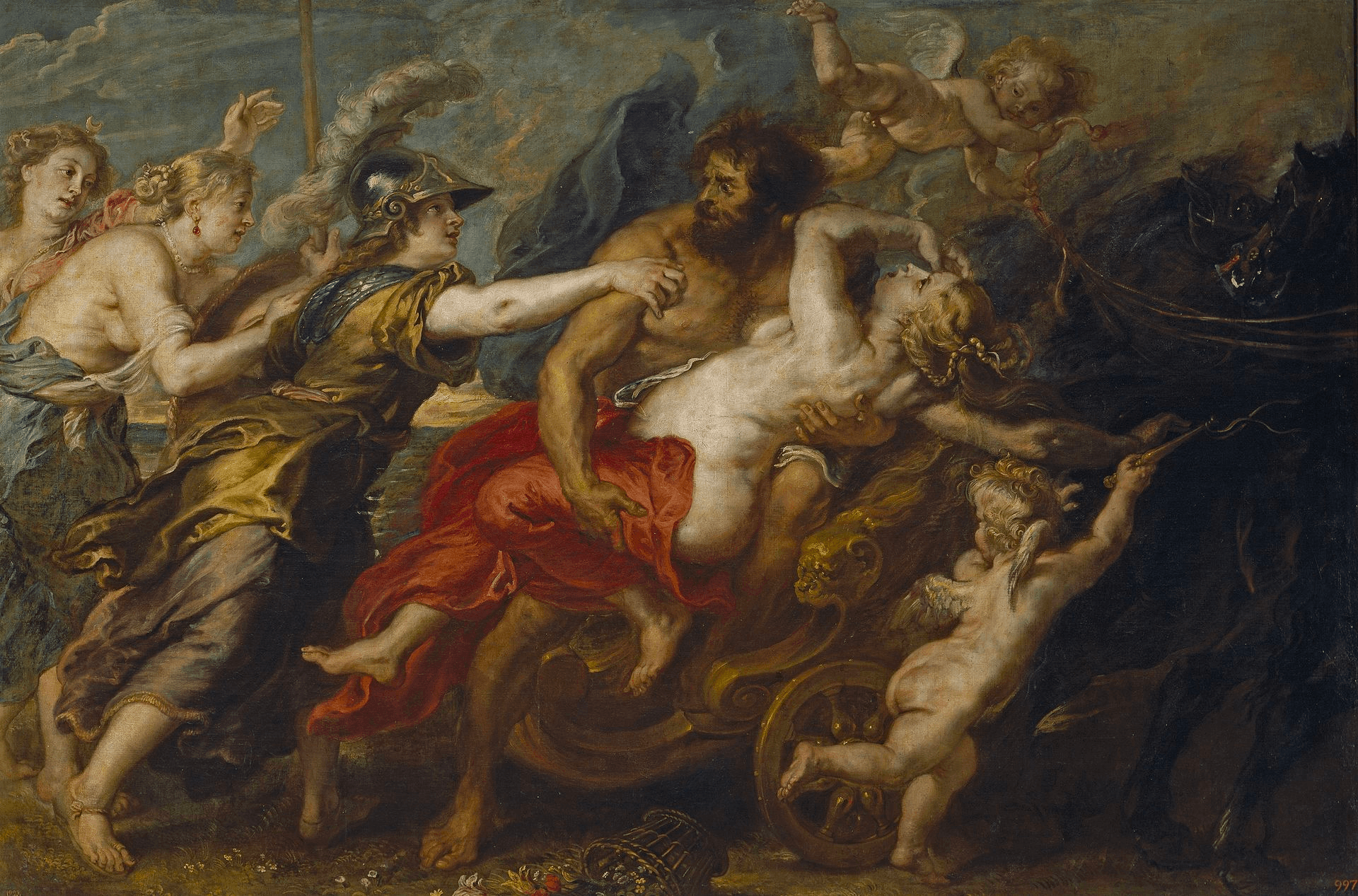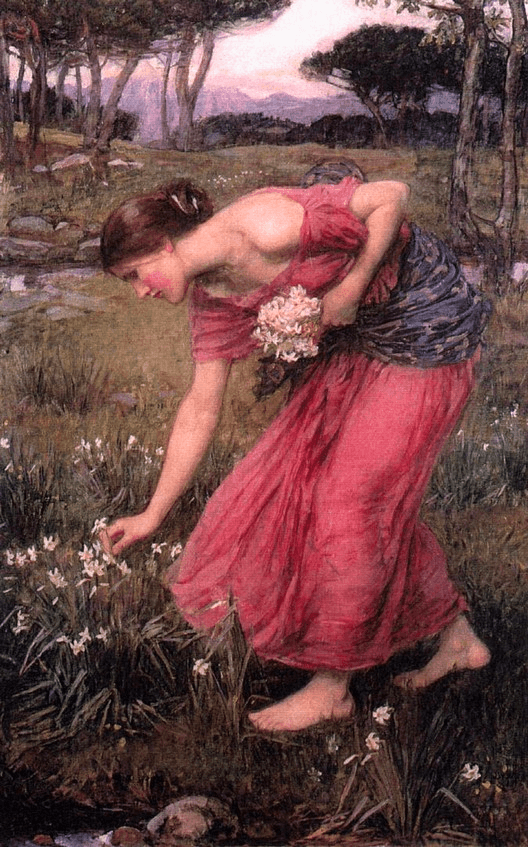Perspehone has a double function as chthonic and vegetation goddess. She returns from the underworld each spring and thus was also a symbol of immortality.
When Persephone would return to the underworld, Demeter's despair at losing her daughter would cause the vegetation and flora of the world to wither, signifying the Autumn and Winter seasons. When Persephone's time is over and she would be reunited with her mother, Demeter's joyousness would cause the vegetation of the earth to bloom and blossom which signifies the Spring and Summer seasons.
This also explains why Persephone is associated with Spring: her re-emergence from the underworld signifies the onset of Spring. Therefore, not only does Persephone and Demeter's annual reunion symbolize the changing seasons and the beginning of a new cycle of growth for the crops, it also symbolizes death and the regeneration of life.
More here.

Chthonic -- concerning, belonging to, or inhabiting the underworld
When Persephone was picking flowers in a field, Hades emerged on his chariot from a crack on the earth, and carried off the unwilling Persephone; only Hecate and Helios witnessed the abduction, and later told Demeter.
More here.
When Hades, the King of the Underworld, wished to make Persephone his wife, he abducted her from a field while she was picking flowers, with Zeus' leave. Demeter searched everywhere to find her missing daughter to no avail until she was informed that Hades had taken her to the Underworld. In response, Demeter neglected her duties as goddess of agriculture, plunging the earth into a deadly famine where nothing would grow, causing mortals to die. Zeus ordered Hades to return Persephone to her mother to avert the disaster. However, because Persephone had eaten food from the Underworld, she could not stay with Demeter forever but had to divide the year between her mother and her husband, explaining the seasonal cycle, as Demeter does not let plants grow while Persephone is gone.
More here.



Depiction of the story in the Homeric Hymn to Demeter:
She [Persephone] was having a good time, along with the daughters of Okeanos, who wear their girdles slung low.She was picking flowers: roses, crocus, and beautiful violets.
Up and down the soft meadow. Iris blossoms too she picked, and hyacinth.
And the narcissus, which was grown as a lure for the flower-faced girl
by Gaia [Earth]. All according to the plans of Zeus. She [Gaia] was doing a favor for the one who receives many guests [Hadês].
It [the narcissus] was a wondrous thing in its splendor. To look at it gives a sense of holy awe
to the immortal gods as well as mortal humans.
It has a hundred heads growing from the root up.
Its sweet fragrance spread over the wide skies up above.
And the earth below smiled back in all its radiance. So too the churning mass of the salty sea.
She [Persephone] was filled with a sense of wonder, and she reached out with both hands
to take hold of the pretty plaything. And the earth, full of roads leading every which way, opened up under her.
It happened on the Plain of Nysa. There it was that the Lord who receives many guests made his lunge.
He was riding on a chariot drawn by immortal horses. The son of Kronos. The one known by many names.
He seized her against her will, put her on his golden chariot,
And drove away as she wept.